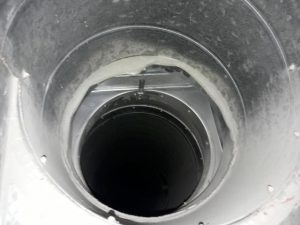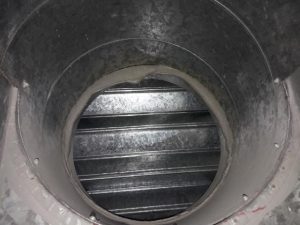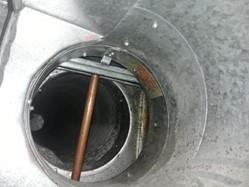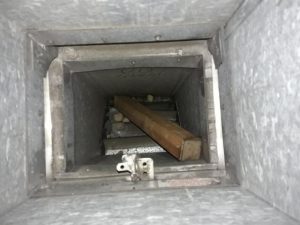Keeping Buildings Safe
In recent years, we have noticed a sharp and significant increase in the amount of business that are paying even more attention to having their fire and smoke dampers checked and regularly maintained. Whilst this is a hugely positive sign for buildings across the UK, especially in the wake of the Grenfell tragedy, BESA still estimates that only 1% of buildings are compliant and have been fully tested in line with legislation. This worrying estimate shows there are a lot of buildings that still need to meet the fire safety standards in order to protect people inside of buildings they are responsible for.
The increase in the amount of legislation that has been introduced to help remove the grey areas the Fire safety industry has historically had, resulted in a cascade of responsibilities that buildings and businesses now must meet to protect everyone inside their buildings. From the BS9999 and the Regulatory Reform (Fire Safety) Order 2005, which combine to create the minimum legal standards for all non-domestic premises. Down to guidance that comes from governing bodies of fire dampers and fire doors, such as VH001, which provides an even higher standard of compliance. This helps to ensure that in the event of a fire, the damage and loss of life is either eradicated or at least minimised.
This hierarchy consistently makes it clear that a responsible person must be designated for each building. Additionally, it helps to ensure they have the correct training and the most up to date knowledge to ensure this legislation is being maintained, even when the legislation is updated or altered. The legislation also makes it clear that in matters of fire safety, ignorance is never an acceptable excuse. This increases the pressure on the responsible person to ensure that the fire prevention measures are all up to the required standards.
Despite this, we have had some alarming discoveries at some sites we have attended. Issues with compliance are not often found with active fire protection, as anyone could see something such as a broken fire alarm or a damaged fire door. The majority of the issues are typically centred around passive fire protection. This is primarily because they are only typically seen by anyone testing them and the responsible person. Some particularly dangerous examples include a bungee cord keeping a fire damper in place instead of the required fusible link, service installations penetrating through fire compartment walls with either inappropriate or no repairs carried out afterwards, invalidation of the fire stopping system by the “bad” installation of one or more elements. These risks that were taken, and similar ones at other buildings, are only discovered through regular inspection and testing or in the result of a fire where the consequences of these measures might be catastrophic or even fatal.
This is the first of many problems faced by businesses involved in the fire safety industry. Another particularly serious measure undertaken by several businesses is to extend the testing intervals of their fire safety elements to save on the costs of having them checked. Not only this, sites are also delaying any remedial costs that may be incurred once they have been inspected and tested. Whilst this need to cut costs is understandable given the pandemic has put a financial strain on many businesses around the country and around the world, this is still a serious breach of the fire safety legislations. These require the fire safety elements within buildings to be tested at regular intervals as well as any remedials actions to be taken and completed within set time periods of the responsible person being notified of the defects. Extending the testing intervals puts people’s lives at risk by increasing the period of non-compliance. These periods are set to help ensure the fire safety element will function as intended in the event of a fire breaking out.
Not only can companies extend the testing intervals of fire safety elements but they can also prolong the time between having their kitchen extracts cleaned, if any are present. During recent years, there has been an increase in the number of kitchen fires that have been reported. These can typically be caused or exacerbated by the grease in the kitchen extracts catching light. If left for long enough it can even begin to drip down into the kitchen causing a concern around health and safety and food hygiene. To avoid these problems occurring, the kitchen extracts should be cleaned at least annually, or more regularly if they are more frequently used. Legislation such as the Regulatory Reform (Fire Safety) Order 2005 and additional guidance such as TR19 Good Practice Guide for Internal Cleanliness of Ventilation systems has helped to regulate the standard that kitchen extracts should be cleaned to. This ensures these systems are safe and will not be a danger to anyone within the building.




Another significant problem that tends to be widespread within fire safety is engineers being able to gain access to passive fire safety measures. For example, the latest estimates from BESA indicate that roughly 25% of fire dampers cannot be accessed and in some of the worst cases that have occurred, up to 90% of are not able to even be located by the responsible person within the ductwork of the building.
This highlights how important it is to have a qualified and competent responsible person on your site. Not only will it help to eliminate these sorts of issues regarding vital fire safety equipment, it also increases the chances that they will seek out contractors that are equally as qualified and competent to ensure the functionality and longevity of all equipment is maintained. This has always been a critical aspect of building maintenance and management as the responsible person can face serious legal consequences if anything should go wrong in the event of a fire.
Another important aspect to be considered is an intrusive fire survey. These surveys provide a comprehensive examination of the performance of a building in case of a fire. They can also be influential in establishing ways in which the threat from the fire can be minimised through the identification of fire hazards within the building. The next step in the process is to identify every individual who could be at increased risk, either due to certain medical conditions such as people suffering from asthma, and those who may struggle to escape, such as employees with disabilities. The final steps are to provide solutions to counteract any hazards that are detected, record the findings, and create an emergency plan for use in the event of a fire. Once created, the plan must be communicated to everyone within the building so they are aware of what they will be expected to do.
The particular measures that have been mentioned are some of the most important ones that need to be considered as part of the whole building approach to fire safety and smoke control. However, it’s important to stress that every element of a building needs to be considered to ensure the safety of everyone inside a building and to minimise or eliminate the possibility of a fire spreading throughout the building.
Click here to see Hydro-X Fire’s full range of services to keep your buildings safe compliant




